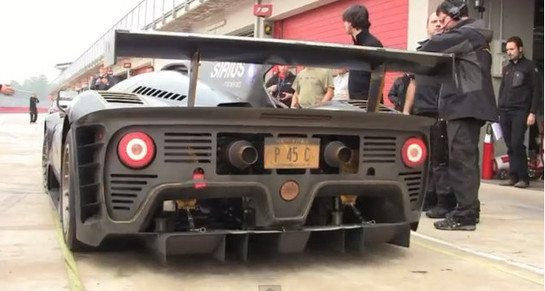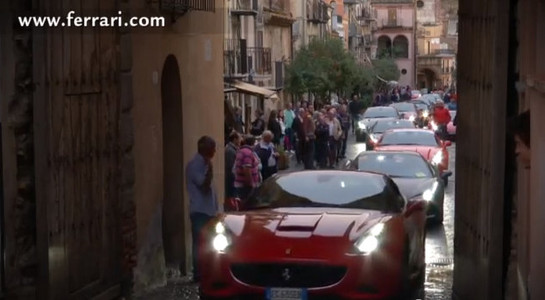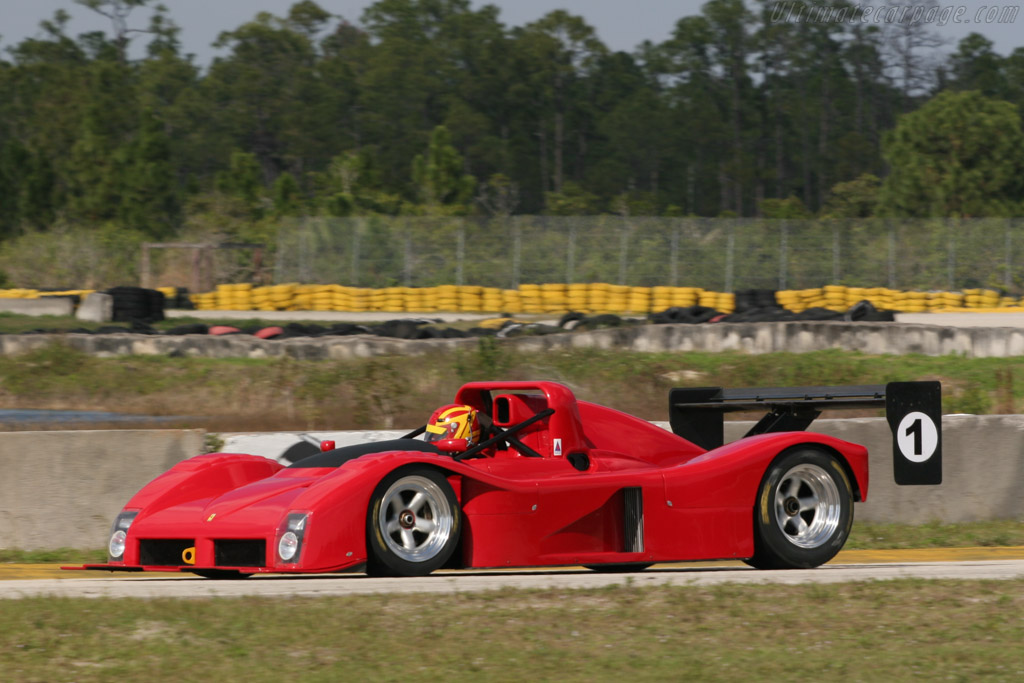History of the Targa Florio – Page Two
Between the wars, Bugatti dominated for five years (1925-29), then Alfa Romeo for six in a row with Tazio Nuvolari (1931 and 1932) and Achille Varzi (1930 and 1934) winning two each. The 1936 event was run over two laps for 1.5-liter cars and was taken by Constantino Magistri in a Lancia Augusta. Maserati won the last four of the decade—1937 to ’40—with Luigi Villoresi triumphant at the last two.

Czechoslovakian Elizabeth Junek with Vincenzo Floria. She was the first woman to compete in the Targa Florio in 1927. She was in third when the steering in her Bugatti Type 35B broke.

Driving an Alfa Romeo P2 over the 108 km Media Circuit, Achille Varzi won the 1930 Targa Florio in just under seven hours averaging 78 mph.
Then the world went to war again putting a hiatus on racing. In 1943, the Gestapo put Vincenzo and Lucia Florio in a Rome jail in an effort to persuade Italians to continue the fight. The next Targa wasn’t held until 1948.
Over the years since then, a number of familiar names competed including Umberto Maglioli, Piero Taruffi, Carroll Shelby, Luigi Musso, Oliver Gendebian, Dan Gurney, Jerry Grant, Bob Bondurant and Phil Hill.
Nineteen fifty-five was a tragic year for racing and a significant for the Targa. First, there was the
horrific accident at Le Mans where more than 80 people died. In addition, Alberto Ascari, Bill Vukovich, Jack McGrath and James Dean died behind the wheel. Daimler Benz was competing for the World Manufacturers Championship and, for the first time, the Targa was included. Stirling Moss and John Fitch won the Tourist Trophy in September driving a Mercedes-Benz 300SLR, making the Targa in October the deciding event. At that point, Ferrari had 19 point while Mercedes had 16. So Daimler-Benz launched an all-out effort, going to Sicily with eight 300SLRs plus eight trucks with 45 mechanics.
Stirling Moss was teamed with Peter Collins, John Fitch with Desmond Titterington and Juan Manuel Fangio with Carl Kling. On October 16, 72-year-old Vincenzo Florio flagged off 47 competitors at 30-second intervals. According to Fitch, “By the end of the first lap, Stirling had stormed into the lead, having passed the entire pack and broken all records with a lap of 44 minutes averaging 60 mph on the narrow, twisting road where one blind corner followed another.” Castelotti was second in a Ferrari with Fangio close behind. But on the fourth lap, Moss went off the road damaging the car and losing coolant. After a pit stop for repairs, Collins took over and recovered the lost time, then handed back to Stirling who went faster and faster, finally setting a new record of 43 minutes, 7.4 seconds. Moss took the flag followed by Fangio and then the Castelotti Ferrari, thus securing the championship for Daimler-Benz. After 1955, the company retired from racing.

Juan Manuel Fangio (pictured) and Karl Kling in a Mercedes-Benz 300SLR were second overall in the 1955 Targa Florio. (Photo: Daimler Benz Archives)

John Fitch in the No. 106 Mercedes-Benz 300SLR leading Eugenio Castellotti in his Ferrari 860 Monza through the mountains of Sicily during the 1955 Targa Florio. (Photo: Daimler Benz Archives)

Tire change on the Mercedes-Benz 300 SLR of Stirling Moss and Peter Collins. (Photo: Daimler Benz Archives)

Stirling Moss (pictured) and his teammate, Peter Collins, won the 1955 Targa Florio in the Mercedes-Benz 300SLR, securing the World Championship for Sports Cars that year. (Photo: Daimler Benz Archives)
The following year, Moss drove a Porsche with Graham Hill. They came within 500 yards of winning when the rear axle broke. “It was bitterly disappointing,” Moss remembered, “but that was the Targa all over; triumph one minute and disaster at another and nothing to warn you what was coming next.”
My friend, Brian Redman won one of the last Targas in 1970 driving a Porsche 908/3. The previous year, Brian and Jo Siffert had won Brands Hatch, Spa, Monza, the Nurburgring and Watkins Glen clinching the World Manufacturers Championship for Porsche for the first time. Before the Targa, the Porsche team manager suggested Brian get some practice. “I spent two or three days driving around the 44-mile circuit trying to learn the impossible. In the race, whilst running among the top three, I had a drive-shaft break, so that was that.”
In 1970, Redman was teamed with Jo Siffert, who started, then came in after three laps for a driver change. “I jumped in and managed to close up to the leader, Nino Vaccarella in a Ferrari 512. I tried to pass him three times and three times he was going to push me off the road. Finally, I held my place about 100 yards behind for two laps and then closed right up at the pit stop where we had a faster driver change. So Jo went into the lead and, six and half hours after the start, finished in first place.”

1969 Targa Florio. Ferry Porsche in conversation with (from l-to-r) racing drivers Umberto Maglioli, Dick Attwood, Brian Redman, Ferry Porsche, Hans Herrmann, Udo Schütz, Rolf Stommelen (with glasses), Vic Elford, Rudi Lins and Gérard Larrousse. Gerhard Mitter is at the wheel of the Porsche 908/02, with race number 266. The 1969 Targa Florio was a great success for Porsche: 1st place went to Gerhard Mitter and Udo Schütz; 2nd to Vic Elford and Umberto Maglioli; 3rd to Hans Herrmann and Rolf Stommelen; and 4th to Karl von Wendt and Willi Kauhsen. All were in Porsche 908/02 Spiders. (Photo: Porsche AG)

Brian Redman driving the winning Porsche 908/3 at the 1970 Targa Florio. (Photo: Porsche AG)
Brian’s final year was 1971. On the first lap when the steering failed, he crashed into a pole; the car caught fire and exploded. “On fire from head to foot, doing a very fair imitation of Joan of Arc and blinded by fire, I staggered across the road and collapsed.” Ferrari entered Redman with Jackie Ickx in 1973, but Jackie crashed on the first lap.

The Alfa Romeo T33/3 of Nino Vaccarella and Toine Hezemans finished first at the 1971 Targa Florio. (Photo: Autosports Marketing Associates)

Practice at the 1973 Targa Florio - the Ferrari 312 PB of Jackie Ickx and Brian Redman. (Photo: Brian Redman Collection)
Brian summed up his experiences: “The Targa was something different, the last of the real old-style road races, run in a beautiful, mysterious country with feelings of incipient danger, whether actual ones on the road or those imagined from the unknown, were never far away.”
The record shows that the Targa Florio was the longest-lasting road race, outliving the Mille Miglia by 16 years. It was held 57 times in 67 years. After 1977 it has been run as a rally, but in Europe, rallies as are almost as tough as races.
Notes: I spoke with 94-year-old John Fitch on the phone a few days before writing this. He was at his home near Lime Rock, the same house where he has lived since 1960. In spite of some recent mishaps, Stirling and Susie Moss still live near the Hilton Hotel in London. They went on a cruise this January and he is still active making appearances. At age 80, he retired from vintage racing. Brian Redman is going at a “tour guide” to Italy for the start of the Mille Miglia in May. Next he plans trips to the Goodwood Festival as well as the Revival.

































